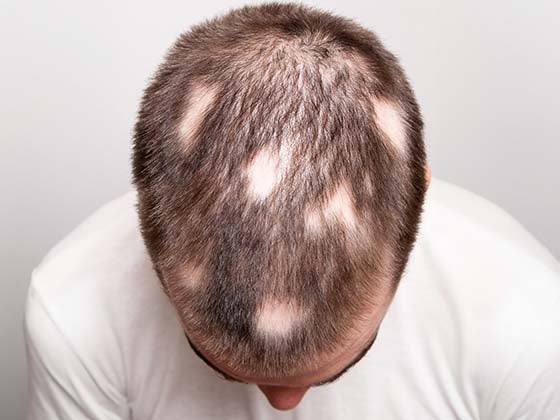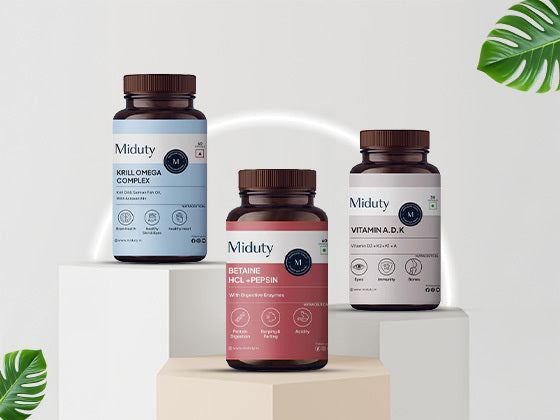Are you looking for an effective way to improve your skin's texture, tone, and overall appearance? If so, you might have heard about niacinamide and retinol, two popular skincare ingredients that are commonly used to target a wide range of skin concerns. Niacinamide, also known as vitamin B3, is a water-soluble vitamin that can help to reduce inflammation, regulate sebum production, and improve skin barrier function. Retinol, on the other hand, is a derivative of vitamin A that is known for its ability to increase collagen production, stimulate cell turnover, and reduce the appearance of fine lines and wrinkles.
While niacinamide and retinol are powerful ingredients in their own right, many people wonder whether they can be used together for even better results. In this blog post, we'll explore the benefits of using niacinamide and retinol together, how to mix them properly, and the potential risks and side effects that you should be aware of. We'll also compare niacinamide vs. retinol to help you determine which one might be right for your skincare needs. So, let's dive in and learn more about how niacinamide and retinol can help you achieve your best skin yet.
Using Retinol vs. Niacinamide for Glowing Skin

When it comes to choosing between retinol and niacinamide for glowing skin, the answer ultimately depends on your individual skincare needs and goals. Retinol is a powerful ingredient for reducing the appearance of fine lines and wrinkles, improving skin texture and tone, and increasing collagen production. On the other hand, niacinamide is a great option for reducing inflammation, improving skin barrier function, and regulating sebum production. While each ingredient has its own unique benefits, incorporating both retinol and niacinamide into your skincare routine can provide even more comprehensive results. Ultimately, it's important to experiment with different products and formulations to determine what works best for your skin.
Can Niacinamide Be Used with Retinol?

Niacinamide and retinol are two of the most popular skincare ingredients on the market and for good reason. Both are known for their ability to improve the overall texture, tone, and appearance of the skin. But can they be used together? The short answer is yes, niacinamide and retinol can be used together, but there are some important things to keep in mind.
One of the primary concerns when using niacinamide and retinol together is the potential for irritation. Both ingredients can be quite potent, and using them in combination can increase the risk of skin irritation, redness, or sensitivity. To minimize the risk of irritation, it's important to introduce each ingredient slowly and to use them at different times of the day. For example, you might use niacinamide in the morning and retinol at night, or vice versa. This can help to give your skin time to adjust to each ingredient and minimize the potential for irritation.
Another important consideration when using niacinamide and retinol together is the pH of the products you're using. Niacinamide works best at a slightly acidic pH, while retinol is most effective at a neutral pH. If the pH of the products you're using is too high or too low, it can reduce the effectiveness of both ingredients. To ensure that you're getting the most out of your niacinamide and retinol products, it's a good idea to check the pH levels and use them in the correct order.
When using niacinamide and retinol together, it's also important to keep in mind that both ingredients can dry the skin. To avoid dryness or flakiness, it's a good idea to use a moisturizer that contains hydrating ingredients such as hyaluronic acid or glycerine. This can help to keep the skin hydrated and supple, even while using potent ingredients like niacinamide and retinol.
Optimizing the Benefits of Both Ingredients

Understanding the distinct functions of niacinamide and retinol, as well as how they might complement one another in a skincare routine, is essential for optimizing their advantages. Here's how you can successfully incorporate both:
Niacinamide (Vitamin B3):
-
Niacinamide strengthens the skin barrier, minimizing moisture loss and increasing resilience.
-
It can lessen the appearance of dark spots, hyperpigmentation, and redness, resulting in a more even complexion.
-
Niacinamide is anti-inflammatory, making it ideal for sensitive and acne-prone skin.
-
It controls sebum production, which can help manage oily skin without producing dryness.
Retinol (Vitamin A):
-
Retinol increases collagen formation, which improves skin suppleness and minimizes the appearance of fine lines and wrinkles.
-
It increases cell turnover, which aids in the clearance of dead skin cells and promotes new cell growth.
-
Retinol reverses UV damage and improves skin texture, making it beneficial against the indications of aging.
-
It can also help prevent acne by keeping pores from clogging.
Recommendations for Sensitive Skin Types

Some product recommendations for niacinamide and retinol that are appropriate for sensitive skin types:
Niacinamide Products for Sensitive Skin:
-
Clinikally The Ultimate NIA (10% Niacinamide) Serum
-
COSRX The Niacinamide 15 Serum
-
Sebonia Niacinamide Zinc Serum
-
Beauty of Joseon Propolis + Niacinamide Glow Serum
Retinol Products for Sensitive Skin:
-
Clinikally Skin Renewer Retinol Serum
-
COSRX The Retinol 0.1 Cream
-
Renewcell Retinol 2% + Argireline
-
Au.ric Retinol Serum
-
Re'equil 0.1% Retinol Night Cream
How to Use Niacinamide and Retinol Together

Niacinamide and retinol are two potent skincare ingredients that can work wonders when used together. Niacinamide helps to improve skin barrier function, reduce inflammation, and regulate sebum production, while retinol helps to increase cell turnover, reduce the appearance of fine lines and wrinkles, and improve overall skin texture and tone. If you're interested in using niacinamide and retinol together in your skincare routine, here are some tips to help you get the most out of these powerful ingredients.
-
Start Slowly: When using niacinamide and retinol together, it's important to start slowly and introduce each ingredient separately. Begin by using each ingredient once or twice a week, gradually increasing the frequency as your skin becomes more accustomed to the products.
-
Use Different Times of the Day: Niacinamide and retinol should not be used together at the same time, as they may cancel out each other's benefits. Niacinamide is best used in the morning, while retinol should be used at night, as it can increase the skin's sensitivity to the sun. This will give each ingredient time to work its magic without interfering with the other.
-
Use a Gentle Cleanser: When using niacinamide and retinol together, it's important to use a gentle cleanser that won't strip your skin of its natural oils. Look for a cleanser that is free from harsh chemicals, fragrances, and alcohol.
-
Check pH levels: Niacinamide works best at a slightly acidic pH, while retinol is most effective at a neutral pH. Before using both ingredients, make sure that the pH levels of the products are within the optimal range to ensure that you get the most out of each ingredient.
-
Apply a Moisturizer: Both niacinamide and retinol can be drying to the skin, so it's important to use a hydrating moisturizer that contains ingredients like hyaluronic acid or glycerine. This will help to keep your skin hydrated and supple while using these potent ingredients.
-
Sun Protection: Both niacinamide and retinol can increase your skin's sensitivity to the sun, so it's important to apply a broad-spectrum sunscreen with an SPF of 30 or higher every day, regardless of the weather or season.
By following these guidelines and paying attention to your skin's reactions, you can effectively incorporate niacinamide and retinol into your skincare routine to address a variety of skin concerns and achieve healthy, radiant skin.
Using Niacinamide or Retinol First?

If you're using both niacinamide and retinol in your skincare routine, you may be wondering which ingredient to apply first. The general rule of thumb is to apply your products in order of thinnest to thickest consistency. This means that if you're using a serum or toner with niacinamide and a cream or oil-based retinol product, you would apply the niacinamide serum first, followed by the retinol product. However, if you're using two products with similar consistencies, it's generally best to apply the one that has a lower pH first. Niacinamide works best at a slightly acidic pH, while retinol is most effective at a neutral pH.
Mixing Niacinamide and Retinol Together?

Niacinamide and retinol can be mixed, but it's important to use caution and introduce each ingredient gradually to avoid any adverse reactions. Some experts recommend applying a niacinamide serum in the morning and a retinol product at night to avoid any potential conflicts between the two ingredients. However, if you do choose to mix niacinamide and retinol together, it's important to check the pH levels of each product and make sure that they're compatible. You can also try using a product that contains both niacinamide and retinol, which can simplify your skincare routine.
Using Tretinoin and Niacinamide Together?

Tretinoin, also known as topical retinoid, is a more potent form of retinol that is available by prescription. Like retinol, tretinoin can increase cell turnover and improve the overall appearance of your skin. While tretinoin and niacinamide can be used together, it's important to introduce each ingredient gradually and use caution to avoid any adverse reactions. It's generally recommended to use tretinoin at night and niacinamide in the morning to avoid any potential conflicts between the two ingredients. However, if you're using both products together, it's important to check the pH levels and use a gentle cleanser and moisturizer to minimize irritation and dryness. As with any new skincare routine, it's always a good idea to consult with a dermatologist to determine the best course of action for your individual skin type and concerns.
Addressing Irritation and Sensitivity

Addressing irritation and sensitivity while using skincare products containing niacinamide and retinol is important to keeping your skin healthy and comfortable. Here are a few effective strategies:
-
Patch Test: Before using any new product on your face, perform a patch test on a small area of skin (such as behind the ear or on the forearm) to check for any negative responses. This aids in the identification of potential sensitivity before the product's wider application.
-
Start Slowly and Gradually: When adding niacinamide or retinol to your skincare routine, begin with a lesser concentration or frequency of use. Begin by using the product once every few days, or even once a week, and gradually increase as your skin tolerates it. This strategy helps your skin to become accustomed to the active chemicals without overpowering it.
-
Use Gentle Formulations: Look for products that are specifically developed for sensitive skin or that include soothing ingredients in addition to niacinamide or retinoid. Look for formulations free of alcohol, aroma, and other potentially irritating ingredients.
-
Buffering Technique: For retinol, try buffering it with a moisturizer. To lessen the strength of your moisturizer, mix a small bit of retinol into it before applying. This reduces the possibility of irritation while still reaping the benefits.
-
Moisturize Adequately: Make sure your skincare routine includes a mild, nourishing moisturizer. This helps to replace moisture, build the skin barrier, and reduce any dryness or irritation caused by active substances such as retinol.
-
Alternate Days or Times: If you're utilizing both niacinamide and retinol, try applying both at separate times of the day or on alternate days. To reduce the possibility of interactions and irritation, use niacinamide in the morning and retinol at night.
-
Monitor Your Skin: Pay close attention to how your skin reacts to different products. If you experience signs of irritation, such as redness, itching, or heightened sensitivity, reduce or halt use until your skin calms down. Return to a milder approach if necessary.
-
Sun Protection: Both niacinamide and retinol might make skin more sensitive to the sun. Regardless of the weather or indoor activity, always use a broad-spectrum sunscreen with an SPF of 30 or higher. This protects your skin from UV rays and further discomfort.
-
Consider Professional Advice: If you continue to feel irritation or sensitivity despite making changes to your skincare routine, consult a dermatologist. They can make personalized recommendations and offer other products or treatments that are better suited to your skin type and issues.
Enhancing Your Skincare Routine with Both Ingredients

Using niacinamide and retinol in your skincare routine requires strategically integrating these components to maximize their advantages while minimizing any discomfort. Here's a complete way to successfully incorporate both into your regimen:
Morning Routine:
-
Start with a gentle cleanser suitable for your skin type to remove any impurities accumulated overnight.
-
If you use a toner, choose one that hydrates and balances the skin's pH without alcohol or harsh ingredients.
-
Apply a niacinamide serum to clean, dry skin. Niacinamide helps improve skin texture, reduce the appearance of pores, and enhance the skin barrier throughout the day.
-
Follow up with a lightweight, hydrating moisturizer to lock in moisture and provide a smooth base for makeup application.
-
Finish with a broad-spectrum sunscreen of at least SPF 30. Niacinamide helps enhance the effectiveness of sunscreen and provides additional skin barrier support.
Evening Routine:
-
Use an oil-based cleanser to remove makeup and sunscreen, followed by a gentle foaming or cream cleanser to cleanse the skin thoroughly.
-
If you use a toner, opt for one with soothing ingredients to calm the skin after cleansing.
-
If you prefer, you can use niacinamide again in your evening routine for its continued benefits.
-
Apply a pea-sized amount of retinol to dry skin. Start with a lower concentration and gradually increase frequency as your skin tolerates it. Allow it to absorb completely before proceeding to the next step.
-
Follow with a nourishing night cream or moisturizer to help replenish moisture and soothe the skin.
-
If you use an eye cream, apply a small amount around the eye area using gentle patting motions.
Day vs. Night Application

When combining niacinamide and retinol into your beauty routine, understanding when to use them—day or night—can assist maximize their effects while keeping your skin healthy and balanced.
-
Daytime (Niacinamide): Niacinamide is good during the day since it strengthens the skin barrier, regulates oil production, and has antioxidant qualities. Niacinamide should be applied in the morning, after cleansing and toning, but before moisturizer and sunscreen. It protects the skin against external stressors, reduces redness, and improves overall skin tone throughout the day.
-
Nighttime (Retinol): Retinol is most effective at night because it increases sensitivity to sunlight. It works by encouraging cell turnover, increasing collagen formation, and reducing the appearance of fine lines, wrinkles, and UV damage. Apply retinol in the evening, after cleansing and toning but before moisturizing. Start with a pea-sized amount and progressively increase the frequency as your skin tolerates it. Overnight, retinol renews and rejuvenates the skin, making it an excellent anti-aging therapy.
Incorporating Sunscreen with Your Routine

Sunscreen is vital for protecting your skin from damaging UV rays, whether you use niacinamide, retinol, or both. Here's how to properly incorporate sunscreen into your everyday skincare routine:
-
Cleansing: Begin your daily skincare regimen with a gentle cleanser appropriate for your skin type, removing any pollutants that have accumulated overnight.
-
Toner (Optional): If you use a toner, be sure it moisturizes and regulates the pH of your skin without including alcohol or harsh substances.
-
Treatment: After cleansing and toning, use niacinamide serum or treatment. Niacinamide improves skin barrier function and minimizes the appearance of pores and uneven skin tone.
-
Moisturizer: Apply a lightweight moisturizer suitable for your skin type. This helps to retain moisture and creates a smooth surface for sunscreen application.
-
Sunscreen: As the final step in your morning skincare routine, apply a broad-spectrum sunscreen with an SPF of 30 or higher. Apply liberally to all exposed skin areas, including the face, neck, and any other exposed areas.
By including sunscreen in your daily skincare routine, you protect your skin from premature aging, sunburns, and other UV radiation-related damage, ensuring that your niacinamide and retinol skincare efforts are as effective and safe as possible.
Get Radiant Skin with Niacinamide and Retinol!

In conclusion, incorporating niacinamide and retinol into your skincare routine can provide numerous benefits for achieving healthy, glowing skin. When used properly, these two ingredients can work together to address a range of skin concerns and improve overall skin health. By using high-quality products and introducing these ingredients gradually, you can enjoy the benefits of a radiant and healthy complexion. As always, it's important to consult with a dermatologist if you have any concerns or questions about how to use these ingredients safely and effectively.








































